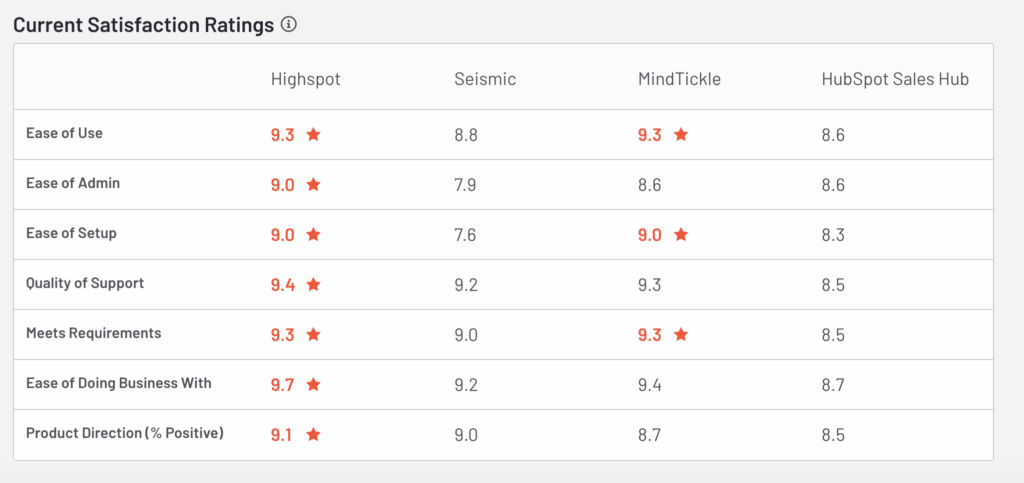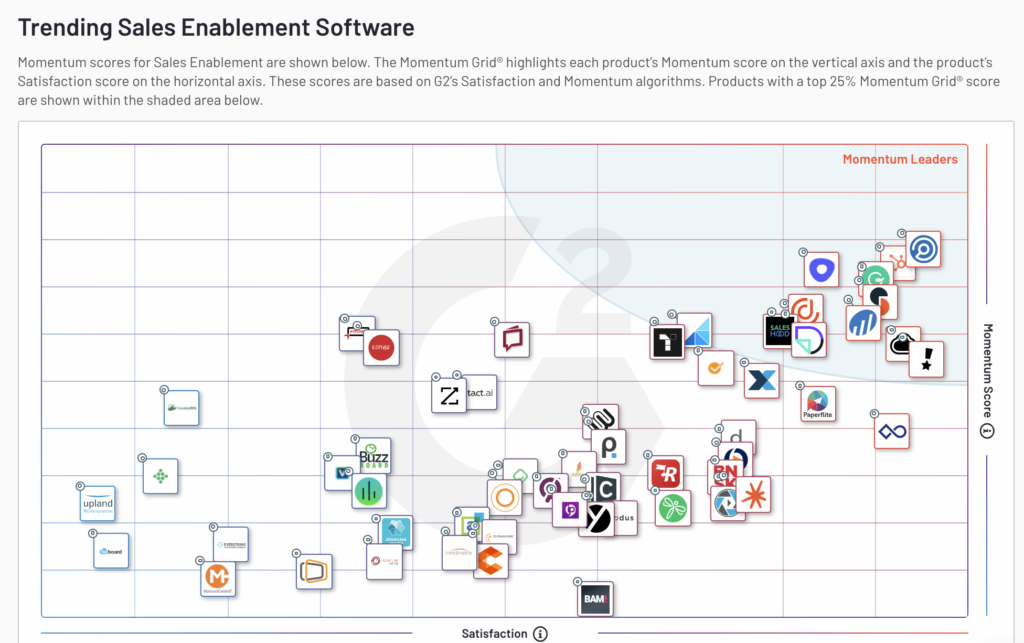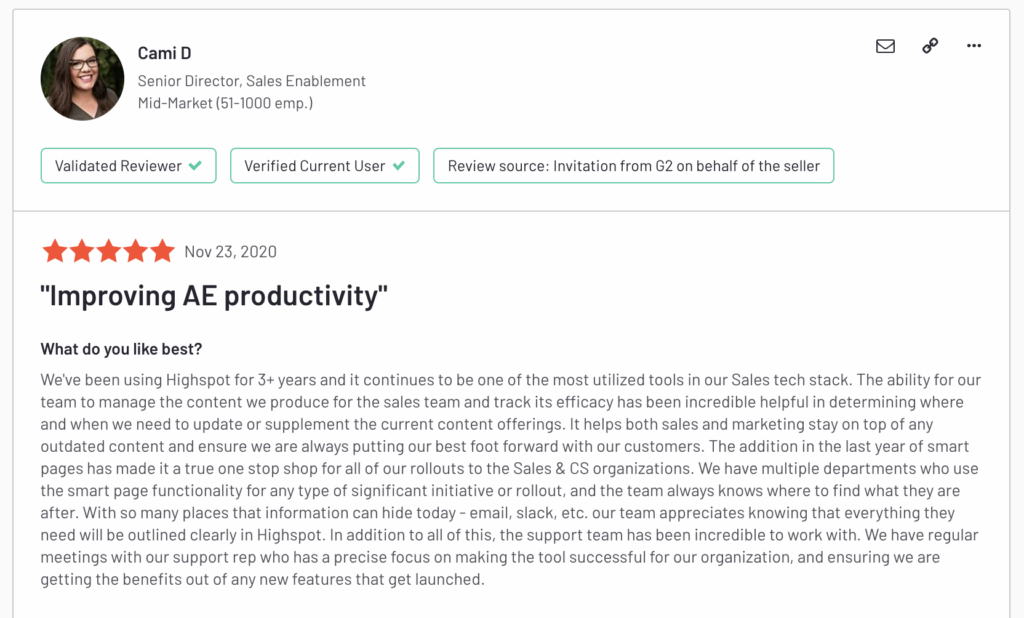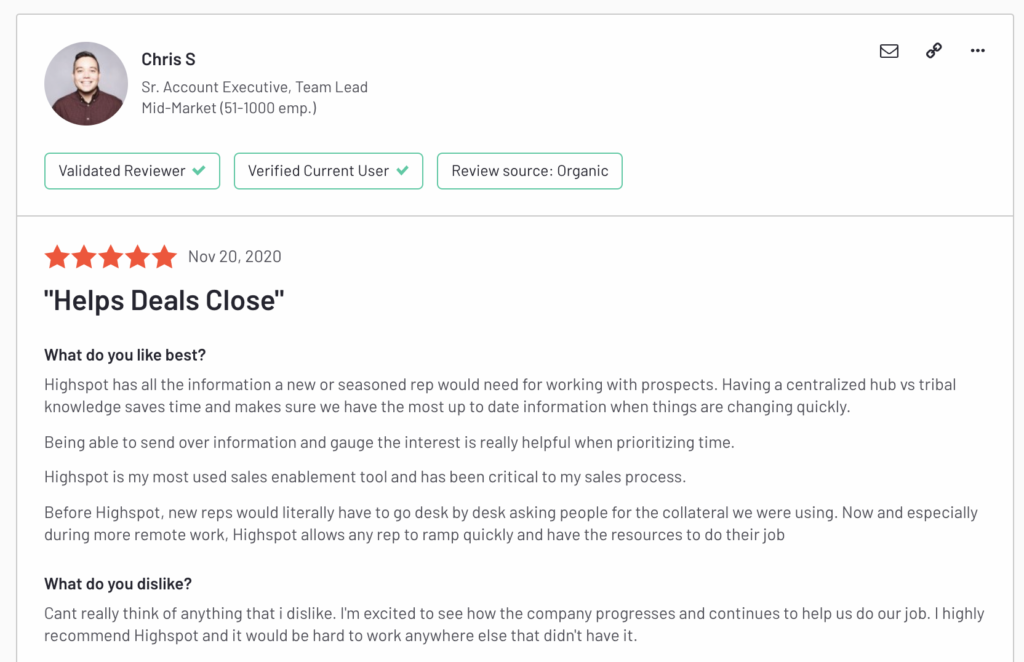You’re likely considering how new technology can help you adjust to the ongoing uncertainty and increasing rate of change — but with thousands of platforms and applications on the market, how do you know which one is best for you?
Enter review resources.
From Capterra to Gartner, there are a wide variety of resources specially created to assist with your buying decision. Right now with the release of the Winter 2021 reports, all eyes are on G2, a tech marketplace where businesses discover, review, and manage the technology they need to reach their potential.
But just like with most things in life, you need to first understand how to use G2 in order to get the most value out of it. While G2 is constantly changing, it’s possible to achieve a solid understanding of how the site works at this moment in time — and how you can make the most of it.
Let’s unpack three tips and tricks on how to leverage G2 to find the tools that will make the biggest difference for you in the new year and beyond.
Tip #1: Ask yourself, “Is G2 the right place to find what I’m looking for?”
There may not be as many review resources as there are software platforms, but there are still an overwhelming number. TrustRadius, Salesforce AppExchange, Capterra, Gartner Peer Insights, Forrester — the list goes on. While the common denominator is comparing software, each review resource has a different focus, approach, and methodology.
Before diving in head first, you should first know if its purpose is right for your company. G2 aims to be a trusted source to help business professionals make better technology decisions by scoring products based on authentic reviews gathered from the user community as well as data aggregated from online sources.
Once you understand the review resource’s purpose, a good indication that it is right for you is your peers at other companies are using it. If people like you are leaving user reviews, the ratings carry more relevant weight. Even then, placing all your eggs into one basket can be risky. Cross-reference various resources to find bigger, consistent patterns that paint a full and balanced picture.
Tip #2: Know that the grids and reports are only as good as your understanding
If you’ve ever visited a review site and been hit by a tidal wave of anxiety, you’re not alone. Review resources can be complicated and impossible to understand at first glance.
G2 is no exception, with a number of grids, reports, and methodologies that make it complex to get to the core of what it all really means to you. Let’s first break down how G2 works, and then get into the nuances you need to know.
The Basics of How G2 Works
At the highest level, G2 sorts all software and services into categories such as localization, business intelligence, and sales enablement, to name just a few. Inside of categories are different grids, indexes, ratings, and other reports. Each grid, index, or report can be viewed by market segment, so make sure you’re selecting the market segment reflective of your company’s size. Companies can choose one or more categories their product(s) fall into based on their main target market. In addition, G2’s internal research team uses a proprietary process to analyze existing reviews to place companies into other categories that might be relevant based on reviews within chosen categories.
How G2 Scores Products and Vendors
G2 collects data from both user reviews and online sources. They then apply a proprietary algorithm to this data to calculate the Customer Satisfaction and Market Presence scores in real time, which are reflected on the grid. These grids are snapshots of moments in time, and are in constant flux.
Customer Satisfaction scores are based on:
- Customer satisfaction with end user-focused product attributes based on user reviews
- Popularity and statistical significance based on the number of reviews received by G2
- Quality of reviews received
- Age of reviews (more-recent reviews provide relevant and up-to-date information that is reflective of the current state of a product or services provider)
- Customers’ satisfaction with administration-specific product or provider attributes based on user reviews
- Overall customer satisfaction and Net Promoter Score® (NPS) based on ratings by G2 users
And as much as we’d like to share what exactly goes into the customer Satisfaction and Market Presence scores, G2 only reveals 7 of the 15 metrics that go into this score. The known metrics are:
- Number of employees
- Web presence
- Social presence
- Growth
- Vendor age
- Employee satisfaction and engagement
- Reviews
As you can see, there’s more to these rankings than what meets the eye. More information about G2’s methodologies for grids and indexes can be found here.

How to Read the Grids and Reports
Knowing how the scores are calculated, as outlined above, is critical. This allows you to weigh the scores appropriately based on what your company cares about. For example, if metrics like “Vendor Age” and “Number of Employees” aren’t important to your decision, then the Market Presence score may not be the best north star.
While it’s important to look at where vendors are today, it’s equally important to evaluate where they are going. A newer grid G2 introduced is the Momentum Grid, which isn’t a snapshot in time but rather a view into the future. It shows the growth trajectory that products have had in their respective spaces in the last year based on user satisfaction scores, employee growth, and digital presence. G2 explains, “With a Momentum Grid, buyers can gain insight into products that are outpacing competitors by delivering innovative solutions that meet the evolving needs of their users. Buyers can also evaluate products on the Momentum Grid to keep apprised of products that are pushing the boundaries of their respective spaces.”

As our Highspot team continues to keep customers at the heart of everything we do, we’re proud to have led the Momentum Grid for 7 consecutive quarters, recognized for our category innovation, customer satisfaction, and vision.
Tip #3: Dig up the treasure trove of insights buried in G2’s peer reviews
At first glance, the peer reviews on G2 crowd are useful, but if you know what to look for, they can be powerful nuggets that impact your purchasing decision.
Professionals want to hear what others in their shoes are doing, but they also want the perspectives of the end users affected by the platform in consideration. Take sales enablement, for example — enablement professionals find value in reading if other enablement people are liking the tool (or not), but in order to be successful, they also need salespeople to love the tool. G2’s peer reviews span many roles, giving you vast perspectives to make the most well-rounded, informed choice for your company.


As you conduct your review search, G2 enables you to get a clear comparison by filtering by company size and industry. It may not be apples to apples if you’re at an enterprise tech company and you’re reading a review from a manufacturing startup, so you can narrow in on reviews that mention specific things you’re looking for, such as “marketing content” or “time saver.” These features help you find the reviews most relevant to you.
Research, Review, Rock On
At the end of the day, review resources matter. They may come in many different shapes and sizes, but with a clear understanding, you can use them to navigate the changing technology landscape and confidently make the best decision.
In order to keep G2’s valuable trove of reviews current and valuable, we encourage you to leave a review for a product you love — it helps others like you choose the tools that can mean a world of difference.




